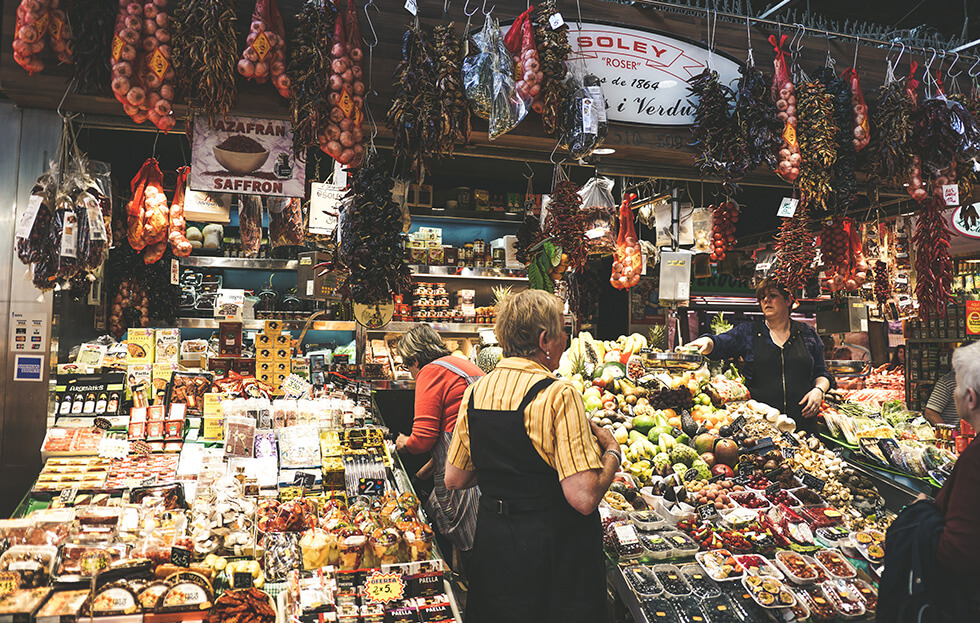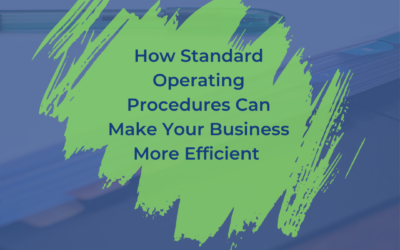We all know objectively that “real food” is better for our body than “processed food”. And we all believe that “processed food” is easier and better tasting than “real food”. But is that true? And just what exactly is real food and what is processed food?
Real foods are foods that are a single ingredient, unprocessed, unaltered foods made without any chemicals or additives. While processed foods are foods that have had their nutritional composition changed by any means. Processed foods include foods that have been cooked, canned, frozen or packaged.
So again, is all processed food bad and all real food good?
History of Real and Processed Foods
The history of real food is pretty simple when the first man became hungry, he ate real food. Single-ingredient, what s/he could grow in the ground, what s/he could catch, food. Much like the Paleo diet, the hunters and gatherers of our ancestors existed on real food.
Processed foods are something different. They existed when humans decided that there was a need for more efficient, quicker, easier and not so much in the kitchen foods. Trans fats started in 1890 and entered the food vocabulary in the 1910s. Some of the foods included Nathan’s hot dogs, Oreo cookies, Aunt Jemima syrup, and Hellmann’s mayonnaise. M&Ms was one of the first processed foods, in 1941. Legend has it that M&M’s were invented so that soldiers could have candy without making their hands sticky. Admirable.
In 1943, the government issued new guidelines for adding vitamins and minerals to bread and grain products. In order to avoid nutritional deficiencies, breads and grains were enriched with iron, thiamine, riboflavin and B vitamins.
What started out as a beneficial program, has mushroomed into an industry that is engineered to make your mind believe you need it…you want it…and ultimately you must have it. At all costs.
And those aren’t just words. A study in 2002 found that foods high in sugar and fats affected the brain just the way heroin, opium or morphine did. So your food addiction is real. And it is linked to an increase in obesity, heart disease, and high blood pressure.
But is this true of all processed foods?
Processed Foods
There are many different degrees of processed foods:
-
-
- Minimally processed foods are those are pre-prepped for convenience. That includes foods such as bagged spinach, cut vegetables, and roasted nuts.
- Canned tomatoes, frozen fruit, and canned vegetables are examples of foods that are processed at their peak to contain nutritional quality and freshness.
- More processed foods are those that have ingredients added for flavor and texture. These include sweeteners, spices, oils, jarred pasta sauce, salad dressings, yogurt, and cake mixes.
- Ready to eat foods such as crackers, granola and deli meat are more heavily processed.
- The most heavily processed foods are pre-made meals. This includes frozen pizza and microwaveable dinners.
-
In today’s world, it is almost impossible to avoid processed foods entirely. But because processed foods add way too much sodium, sugars and unhealthy fats to your diets; and are responsible for obesity, diabetes and heart disease, it is important to know what you are putting into your body. Always look to avoid highly and heavily processed foods.
According to a 2016 research study, highly processed foods contribute to almost 60 percent of calories and 90 percent of added sugars in the American diet. Even foods labeled “natural” and “organic” can be processed, that is why it is important to know what you are eating.
Recognizing Processed Foods
It isn’t always easy to know what is processed and what is not, except you know those microwaveable foods are most likely going to be processed, here are some general rules to follow.
-
- Read food labels
Ingredients are listed in order of quantity
The real problem with reading labels if you don’t have a Ph.D. in linguistics is how do you recognize some foods? Here are a few common additives and their alias:
-
- Sugars have a few names they go by, including but not limited to high-fructose corn syrup, corn syrup, agave nectar, barley malt syrup, and dehydrated cane juice. These are just a few, but they are the most used.
- Salt is also known to utilize several different pseudonyms including sodium, sodium benzoate, disodium or MSG which is monosodium glutamate.
A quick word about salt, the American Heart Association recommends no more than 1500 milligrams of sodium a day. Most diets exceed this amount regularly. The main reason is sodium nitrate. Sodium nitrate is in hot dogs and lunch meats. It is used to preserve fish and meats and control bacteria. While some of the uses of sodium nitrate are good, the effects of too much are bad. Too much sodium can cause high blood pressure and increase your risk of stroke and heart disease.
It is estimated that about 70 percent of sodium in the typical American diet comes from commercially processed and restaurant foods.
-
- Trans fats can raise your risk of developing heart disease and strokes. These fats raise your bad cholesterol level (LDL) and decrease your good cholesterol (HDL).
Trans fats are listed as partially hydrogenated oil and hydrogenated oil.
But seriously what do you look for to avoid processed foods
After carefully checking the labels for what not to put into your body, there are a couple of things that you can look for to help you.
- The five-ingredient rule

This is the idea that if your food contains more than five ingredients it should be avoided. I personally think this is a little harsh, as some of the foods I eat have more than five ingredients and they are all pretty healthy ingredients.
So just be aware.
- Look for the red/white Heart Checkmark
This mark means the product has been approved by the American Heart Association. The criteria for having the heart checkmark includes:
-
- The product has 10 percent or more of the daily value of vitamin A, vitamin C, calcium, protein or dietary fiber.
- Additionally, the product has 1 gram or less per standard serving size and 15 percent or less of calories from saturated fat
- The product has less than .5 grams per label serving size and per standard serving size of trans fat.
- Products containing partially hydrogenated oils are not eligible for certification.
- One of four sodium limits applies depending on the particular food category.
Making it just a little easier here are:
4 Processed Food Groups to Avoid
-
- Deli meats, bacon, hot dogs and sausages
According to the International Agency for Research on Cancer processed meats have been linked to an increased risk of colorectal cancer.
-
- Sodas and sweetened beverages
Sodas, both diet, and non-diet are linked to an increased risk of heart, kidney and liver disease as well as strokes, diabetes, pancreatic cancer and osteoporosis.
-
- Quick microwaveable meals
Which will be high in sodium, additives, and preservatives.
-
- Packaged cookies, cakes, and doughnuts will often have high trans fats which are linked to cancer, infertility and cognitive disorders.
“Good” Processed Foods
There are processed foods that are considered “good”, but even on this list, it is important to read the labels.
-
- Frozen fruits and vegetables
- Canned beans
- Yogurt the type without the flavor additives. Add fresh fruit or honey if you need it a little sweeter.
- Packaged nuts and nut butter, the type without the added sugar, salt and trans fats.
You can avoid the questions by steering your diet towards “real foods”. If you attempt to look up what exactly is a “real food” you will find there is no definitive definition. However, we do know that “real food” is a food that is unprocessed, unaltered without any chemical additives. Real foods are foods that our distant ancestors hunted and gathered.
What are “Real Foods”
Real foods are foods that are as close to their natural state as possible. They are whole, single-ingredient foods. Real foods are:
-
- Whole foods that are a product of nature
- Fruits and vegetables
- Dairy products, milk, unsweetened yogurt, eggs, and some cheeses
- 100 percent whole wheat and whole grains
- Seafood that is wild-caught
- Locally raised meats
- Water, all-natural juices, naturally sweetened coffee and tea
- Honey, maple syrup, and natural sweeteners
It is quite simple, the less sugar, artificial colors, and additives you can eliminate from your diet, the closer you will be to consuming real foods. It is both easy and inexpensive. Since real foods can grow in soil and free from pesticides and other chemicals. You can grow real food in your garden or your apartment. Not all of course but some and picking your vegetables/fruit out of your own garden is pretty exciting.
As far as cost, in an analysis of 27 studies from 10 countries found that eating healthier food costs about $1.56 more than processed food per 2000 calories. That’s pennies to pay for a healthier diet. And the cost is even less if you are growing some of your food.
Why Real Food vs. Processed Foods
Chemically processed foods are bad for your health. There is no question about it. High processed foods are high in sugar or its pseudonym high fructose corn syrup. Sugar is empty calories. Not only that but sugar is associated with heart disease, diabetes, obesity, and cancer.
Medical News Today reports that many processed foods are engineered to be so incredibly “rewarding” to the brain, that they overpower anything we might have come across in nature. So processed foods have been engineered to fight our needs for real food. It’s a fight that we must win.
Real foods are single-ingredient foods that have been around for thousands of years, foods like kefir, sauerkraut, yogurt, kombucha, tofu and bread that contain whole ingredients. These are foods that came before the industrial food complex that saturates our daily lives.
Today more than 60 percent of the American diet consists of highly processed foods, foods that have been taken apart and put back together with different combinations of sugar, salt, oil, and additives. Processed foods are linked to heart disease, cancer, Alzheimer’s and diabetes.
Read labels. You know that single-ingredient foods, real foods are healthier. You know that processed foods, highly processed foods are easier and deadlier.
It is time to veer off the easy road and go for real food. Grow your own. Go to your local farmers’ market. Be healthy. Your body is counting on you.
Get Active
Keep everything in check. Balance is key and if you are overdoing it with food think about getting active. Our mobile app can help you find activities you love and people to do them with!





